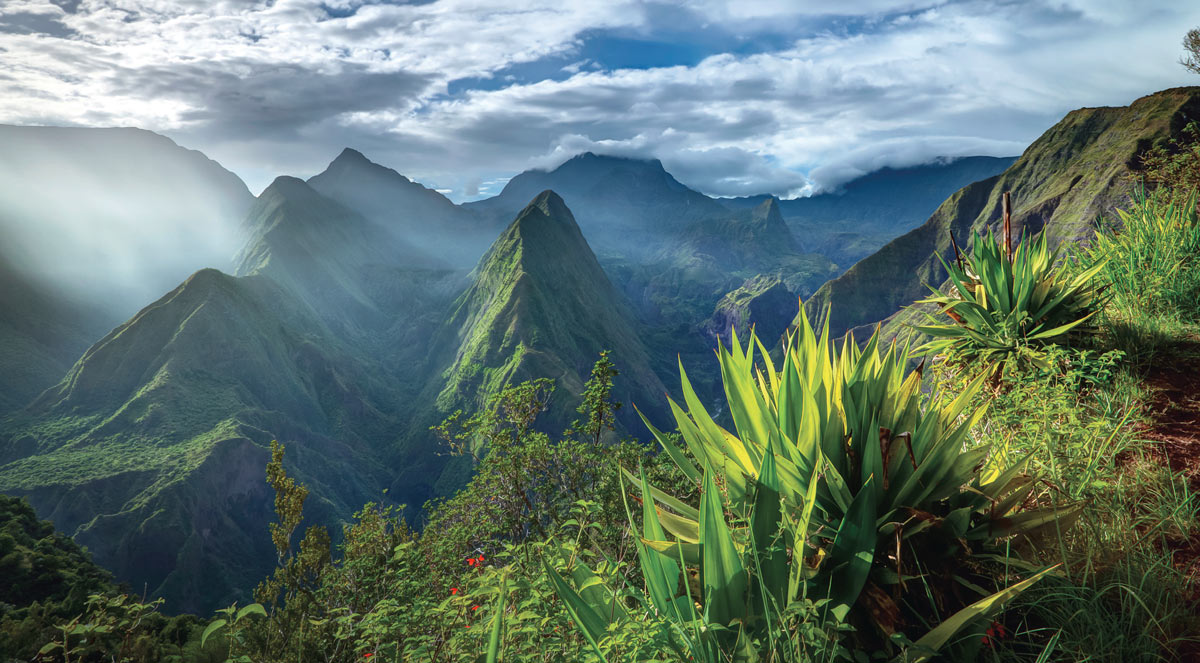Legumes are often over-represented among invasive plant taxa with some taxa, such as the Australian acacias, emerging as model systems within invasion biology. One unusual extra-Australian acacia is Acacia heterophylla, endemic to Réunion Island in the Indian Ocean. Ecologists have long speculated about the unusual distribution of this tree species, which remains an enigma. The most plausible hypothesis is that A. heterophylla was introduced from Hawaii to Réunion (18 000 km apart) by sea birds about 1,4 million years ago.
Traditionally, the success of A. heterophylla in invading the island has been attributed to plant species traits (e.g. high seed outputs) and abiotic factors (e.g. similar climate and soil chemistry between the native and the invaded range). It is also likely that microorganisms (bacteria and fungi), such as rhizobia and arbuscular mycorrhiza (AM), play an important role in the establishment and invasion success of acacias. Rhizobia associate with legumes and fix atmospheric nitrogen into plant-available ammonium, whereas AM facilitate plant nutrient uptake, especially phosphorus.
However, no information is available on the diversity of the microbial communities associated with A. heterophylla, their role in facilitating the invasion process and how these may impact on regional biodiversity and ecosystem functioning. A better understanding of the microbial communities associated with acacias is important in order accurately to understand, predict and manage biological invasions. With this in mind, Dr Angel Valverde (Centre for Microbial Ecology and Genomics) was part of a team of researchers who visited Réunion Island in March 2015 and collected A. heterophylla rhizosphere soils (the narrow zone that surrounds and is influenced by plant roots) from various locations. The team used high-throughput (Illumina amplicon) sequencing to analyse the 16S rRNA gene from the bacterial populations.
Phylogenetic profiling revealed that the bacterial composition of rhizosphere soils was primarily determined by location. A shared core of 94 bacterial taxa was found in all soils, which suggests that common principles underpin A. heterophylla-microbe interactions. Several members of this core are known to promote plant growth and confer tolerance to abiotic stress (e.g. Bradyrhizobium, Rhizobium, Bulkholderia species). Controlled experiments to elucidate the role of these microorganisms in A. heterophylla invasion are currently in progress.
 Réunion Island
Réunion Island
The team that visited Réunion Island included Dr Angel Valverde (Centre for Microbial Ecology and Genomics, UP), working with Dr Dominique Strasberg (University of Réunion), Professor Pedro Crous (the UP Forestry and Agricultural Biotechnology Institute (FABI) and Centraalbureau voor Schimmelcultures, The Netherlands), Professor David Richardson and Dr Jaco Le Roux (Centre of Excellence for Invasion Biology, University of Stellenbosch), and Professor Mike Wingfield (FABI and the Centre of Excellence in Tree Health and Biotechnology, UP).
This group of internationally recognised biologists represent a formidable combination of global experts in their respective fields.